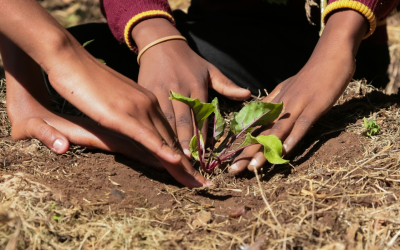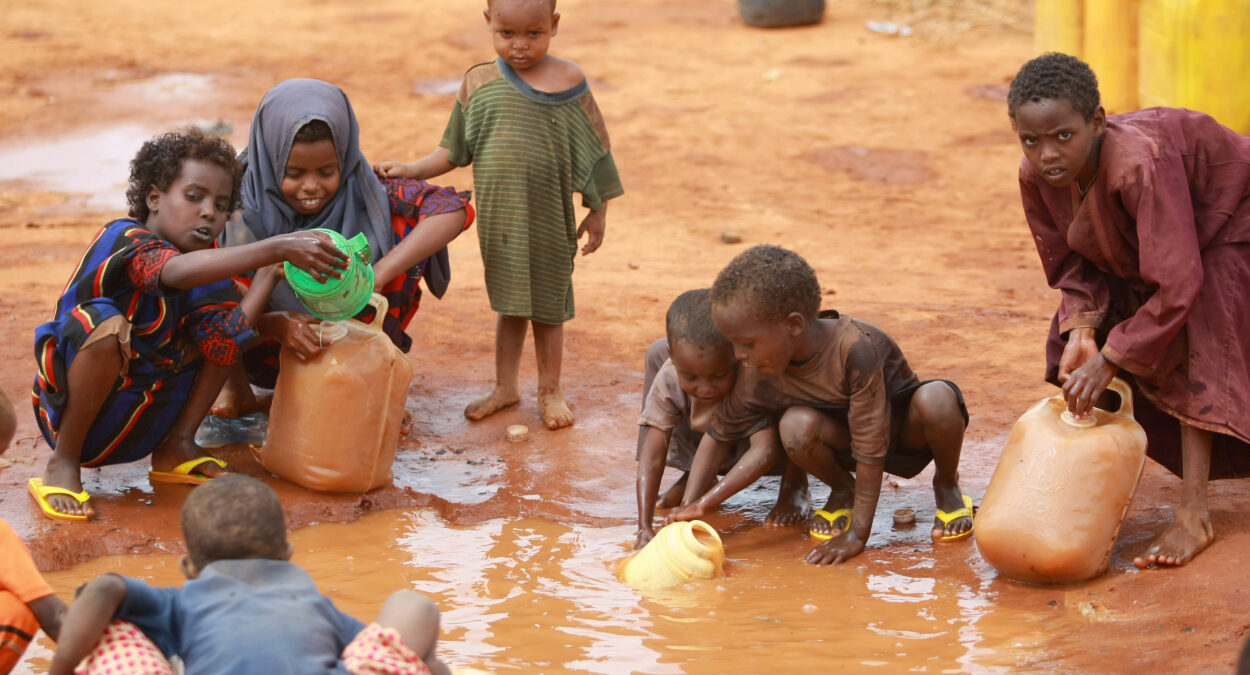CURRENT LIVING CONDITIONS IN ZAMBIA
SCHOOL
Similar to the health system, the education system is also characterised by shortage management. The enrolment rate has still doubled over the past decade. Nowadays, girls too go to school, which was hardly the case for a long time. After primary school, however, school fees, long distances and inadequate sanitary facilities discourage many from continuing their schooling. The schools are often structurally outdated, as are the teaching methods. The teachers are not always sufficiently qualified, there is mistreatment up to and including sexual abuse.
MEDICINE
Access to sanitation is even worse, leading to frequent diarrhoeal diseases that further weaken malnourished people. In addition, these diseases reduce the development opportunities of children and the income opportunities of all affected people. The fact that the hospitals in Zambia are far from European standards is all the more fatal. There is a lack of specialised staff and medicines; furthermore, the hygienic conditions are poor.
HIV is a major burden on the health system, with more than one in ten people between the ages of 15 and 49 infected. In the meantime, the average life expectancy had fallen to 41 years because of this; after appropriate drugs became available, it rose again to 62. One problem is that young people, in particular, are not well informed about the issue.
Water
Although Zambia has large water resources, one third of the population does not have clean drinking water. Access to sanitation is even worse, leading to frequent diarrhoeal diseases that further weaken malnourished people. The human right to water and sanitation is not secured, especially for the poor population. About 15 percent of the urban population and 40 percent of the rural population have no access to drinking water. Similarly, the spread of sanitation services is far from adequate. Suburban residential areas near Zambia's major cities are particularly affected.
nutrition
Zambia is one of the countries on the African continent, where living conditions have improved on average in recent years. Nevertheless, the number of malnutrition cases among young children and mothers is still very high, especially in rural areas. The poor households are particularly affected by the lack of diversified food and feed predominantly on the staple food maize. Children, in particular, suffer from chronic malnutrition. On the World Hunger Index, Zambia has ranked between 110 and 115 out of 117 for years.

Geography
Zambia is a country in southern Africa. It borders Tanzania, Malawi, Mozambique, Zimbabwe, Botswana, Namibia, Angola and the Democratic Republic of Congo. The national territory covers a good 750,000 km² (cf. goruma), making Zambia more than twice the size of Germany. The country is characterised by plateaus located at 1,000 to 1,400 metres above sea level, which are widely presented as a savannah landscape.
The altitude also ensures that the tropical climate is characterised by rather mild temperatures. There is a cool dry season from May to September, followed by a hot dry season of about two months. During the hot rainy season from December to April, violent tropical storms occur. They are also followed by landslides and floods, disrupting transport links and causing problems for water and electricity supplies.

History
The area that is now Zambia has been inhabited by people since early historical times; various African peoples have taken turns over the centuries. For the European colonial powers, the area was of interest mainly because of its copper; in 1890, the area became part of the British colony of Rhodesia. In 1964, Zambia became independent from Great Britain. From then on, Kenneth Kaunda ruled the country until he was replaced by the Movement for Multi-Party Democracy (MMD) in a peaceful transfer of power in 1990. This also marked the end of the one-party system.
Zambia is a presidential democracy. The President is also the head of government, which gives him/her a great deal of power. Of the 165 members of parliament, eight are appointed by the President, the rest are directly elected. In November 2003, the so-called "House of Chiefs" was established, in which the traditional tribal leaders are represented. In the elections in autumn 2011, the “Patriotic Front” won for the first time. When President Michael Lata died in October 2014, Edgar Lunga emerged victorious from an extraordinary presidential election.

Economics
Zambia’s economy is heavily geared towards copper mining, and the country is one of the largest copper presidents in the world. 70% of exports depend on copper. However, this does not offer an excessive number of jobs. Falling commodity prices have caused the economic boom to slow down in recent years. First and foremost is the collapse in copper prices in 2011. This has turned into a tangible economic crisis.
The inflation rate has subsequently risen to 25%. Nepotism, corruption and mismanagement have their share in this development. The country's immense national debt has become a major burden. From 2015 onwards, this rose more sharply than ever before; in 2020, the country had to declare insolvency to its creditors. In this context, it is also worth noting the growing resentment towards the strong Chinese presence in Zambia. For China is one of Zambia's international creditors – the exact amount is not known.
It is Chinese corporations that get almost every big contract in Zambia, and the projects are often financed by China as well. But the population doubts both the benefits and the quality of many projects. Questions are being asked as to whether the country really needs two modern stadiums, and why large parts of a brand new road were simply washed away in 2011. These are projects by Chinese companies. Resentment is also directed against Chinese, who run small businesses in the country – according to the law in Zambia, this should be reserved for locals, but this is not enforced.
After Hakainde Hichilema's election victory, confidence spread again in the economy. This was visible in a significant improvement in the exchange rate of the national currency, the Kwacha. There is talk of a considerable expansion of copper production in the next few years. However, the new government has also announced that a review of the state's finances has revealed that the damage caused by corruption is greater than expected.

POLITICAL STABILITY CHALLENGE
The question of Zambia's political stability has already been raised in the introduction. The previous President, Edgar Lunge, restricted freedom of expression, assembly and the press, and obstructed the work of the political and social opposition. He belongs to the socialist PF. Lungu reacted more and more autocratically over time. In summer 2017, the current President, Hakaine Hichilema of the liberal UPND, was imprisoned and only released after foreign mediation.
The population's trust in the state is diminished by widespread corruption. Not only are tax revenues too low, but the distribution of funds is also not sufficiently transparent. Against this background, it is no surprise that Hakainde Hichilema won the presidential election in August 2021 – the economist is not considered corrupt. Economic problems and inflation also cost former President Lungu the office. The smooth transition of power has now even spread beyond the country's borders – opposition politicians from other African countries see themselves explicitly encouraged in their advocacy for a democratic change.
A burden for politics is the lack of skilled workers and financial resources, especially in the municipal sector. The Zambian government does have the goal of transferring more tasks to the municipalities. This is complemented by reforms in the tax system. This is linked to the hope of making more political participation possible and reducing poverty. Whether the decentralisation efforts will be successful – according to the KFW's assessment – depends precisely on an improvement of the actual situation of the people. This is also a decisive factor for the acceptance of the political system.
SECURITY IN ZAMBIA
Accordingly, the police in particular have suffered a loss of confidence. It is not entirely innocent in this, as unjustified payments are repeatedly demanded during traffic controls. In addition, there is occasionally a lack of commitment. Conversely, this is no surprise as the police are often overburdened; time and again, there is a lack of fuel for the emergency vehicles. One of the consequences is that violent vigilante groups are formed.
The security situation in the border region with the Democratic Republic of Congo is difficult. There, there are incursions across the border, in addition not minefields, which are not seen as such
CHALLENGE OF CLIMATE CHANGE
A major problem for Zambia is climate change. The development is further aggravated by deforestation and slash-and-burn agriculture, as this exacerbates soil erosion. Many, whose depleted soils no longer yield sufficient crops, try to generate income by producing charcoal – which of course accelerates the loss of forest.
There also is evidence that climate change is favouring the spread of locusts. Last autumn (2021), Zambia experienced a plague of locusts, as did several neighbouring countries. In Zambia, 300,000 hectares of land were affected. Insecticides to control locusts are scarce. In many places, the livelihoods of farmers and cattle breeders were destroyed. This exacerbated the already tense supply situation. Because the harvest in May was poor, after two years of drought. The realisation that combating the locust plague requires cross-border cooperation is not particularly widespread.
Climate change also has the potential to slow down an economic sector with growth potential – the tourism sector. Zambia not only covers some of the most biodiverse nature reserves in Africa. The Victoria Falls on the border between Zimbabwe and Zambia are also a big tourist magnet. The widest waterfall in the world attracts millions of tourists every year – but the drought of recent years has caused it to wither badly. There are fears that climate change could dry up the Victoria Falls forever.
THE SOCIAL SITUATION IN ZAMBIA
The social situation in Zambia is characterised by poverty, malnutrition and extreme social inequality. Almost two thirds of the population lives below the poverty line. Until 2014, there had been a period of growth without any improvement in the situation of many people. More than half of the inhabitants have no more than the equivalent of USD 1.90 to live on, almost half are considered undernourished, and the situation is worse in rural areas than in the cities. The average per capita income is declining as the population grows faster than the economy. The KFW expects the population in the country to double in the next two years.
The backwardness of agriculture in Zambia can be seen in the fact that many smallholders still work with hand hoes. This obviously limits productivity. Moreover, agriculture has long focused on growing maize, which does not have many nutrients – a cause of widespread malnutrition. The problem is aggravated by climate change.
Sources:
goruma. Zambia: geography, map; URL: https://www.goruma.de/laender/afrika/sambia/landkarte-geografie (last accessed 30.01.2022)
goruma. Capital and other cities - Lusaka; URL: https://www.goruma.de/laender/afrika/sambia/bevoelkerung-staedte (last accessed 30.01.2022)
statista. Zambia: Total population from 1980 to 2019 and projections to 2026 (in millions of inhabitants); URL: https://de.statista.com/statistik/daten/studie/382417/umfrage/gesamtbevoelkerung-von-sambia/ (as at: 21.01.2022)



